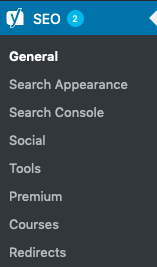Welcome to Scouting America's Brand Center!
If you have not previously registered for an account, please do so by clicking on the registration link below. To fully utilize the capabilities of Scouting America's Brand Center, you must be logged in every time you use the tool. This will allow you to customize and download "Dynamic Templates" for your specific marketing needs. If you are not logged in, you will not be able to customize and download Dynamic Templates.
Sitemaps and Search Engines
When a search engine crawls a website, after following any internal links, they will look to the sitemap to ensure they find all the pages they can. A sitemap, as the name implies, is a list of all the pages you want a search engine to see. While it is accessible to anyone, it’s usually a page that you won’t link to directly because it serves no purpose for the average user. It isn’t formatted to be easy to navigate and doesn’t include any search function. Sitemaps exist solely to give search engines a guide when they automatically crawl your site.
How To
There are a lot of tools out there that will help you build a sitemap, as doing it by hand would be tedious and time consuming. One of the most common is https://www.xml-sitemaps.com. Simply type your full domain name into the central bar, and provided your site is less than 500 pages, you’ll be good to go. It will automatically generate the sitemap for you to copy/paste onto the appropriate page.
If you use the WordPress Theme for Councils provided by the BSA, you’ll also have access to the Yoast SEO plugin, which will do this automatically. You can check this by going to the YoastSEO section in the left navigation bar and clicking “General”

Then “Features” in the tabs at the top:

There you’ll find the “XML sitemaps” toggle, which is on by default:

Submit the Sitemap
For a new page to start showing up in search engines, said engines will have to crawl it first. This usually only takes a few days at most, but they follow their own schedule that can be difficult to predict. If you want to make sure your site shows up as quickly as possible, you can manually submit your sitemap. This does not impact how they will crawl it, or how your pages will rank. All this does is tell the search engine that you’re ready for them to crawl your site again, effectively putting you higher up the queue.
To do so, you’ll need to set up your site in Google Search Console. It’s a free service that will provide a number of useful tools and data points.
https://www.google.com/webmasters/
Once you’ve set up your site, go to “Index” and “Sitemaps” in the left navigation.

From there, type in the URL of your sitemap, hit submit, and you’re all set.

Continue Reading
Read more about sitemaps here: https://moz.com/blog/xml-sitemaps
